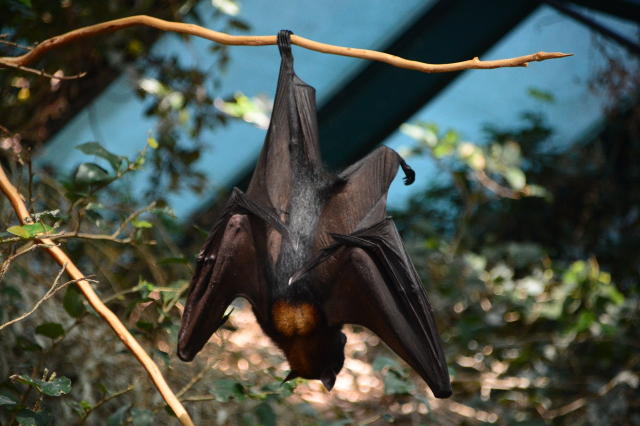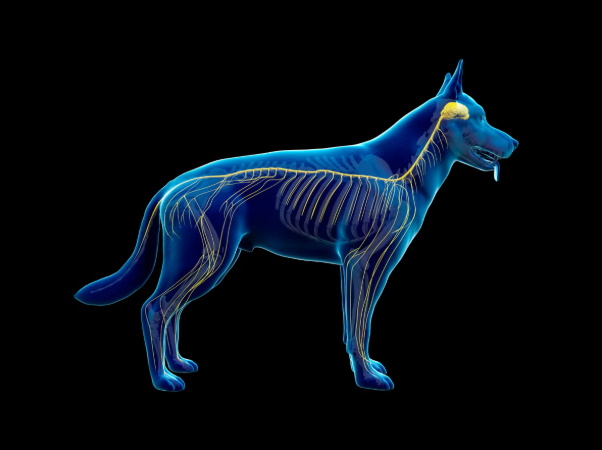10 Unexplained Things That Science Still Struggles With
Science is, without question, one of the most fascinating and dynamic forces shaping our understanding of the universe. What makes it truly special isn’t that it knows everything—but that it never pretends to. In fact, one of science’s greatest strengths is its willingness to adapt. When new evidence shows up that overturns what we once believed, science doesn’t dig in its heels. It adjusts, learns, and moves forward.
This constant evolution can seem like a flaw to some people—how can we trust something that changes? But in reality, that flexibility is what makes science so powerful and credible. It doesn’t claim to have all the answers. Instead, it says, “Here’s what we know right now, and here’s how we know it.”
But here’s where things get fun: even with all our technology, satellites, labs, and research, science still stumbles on some of the simplest things. Things you might encounter every single day—common, even boring—still baffle researchers. And no, we’re not talking about alien life or dark matter (though those are cool too). We’re talking about things like yawning, blushing, or why we dream the way we do. Stuff so basic, yet science still scratches its head.
In a world driven by data and discoveries, it’s kind of mind-blowing to realize that some of the biggest question marks are hiding in plain sight.
10. We Still Don’t Fully Understand How Anesthesia Works

Anesthesia is one of those medical marvels most of us take for granted—until we realize how little we actually know about it. If you’re going in for surgery, it’s your best friend. The idea of being awake and aware while doctors operate is the stuff of nightmares, and anesthesia spares us from that horror. But here’s the twist: scientists still don’t completely understand how it works.
There are several types of anesthesia—local, regional, and general—delivered through inhalation, injection, or IV. Their main goal? Block pain and, in some cases, render you fully unconscious. But getting the dosage right is critical. Too little, and you might feel everything but be unable to move or speak. Too much, and your vital systems could shut down. It’s a high-stakes balancing act.
Despite how common and essential anesthesia is, the exact mechanism behind how it knocks you out remains a mystery. One theory suggests it interferes with the brain’s ability to send signals by dissolving certain fats in nerve cell membranes. Another theory points to its effect on electrical signals in the brain.
In 2020, researchers made a breakthrough—at least with one type of anesthesia. A study on mice showed that it disrupts high-frequency brain signals, possibly muting pain perception, while allowing slower signals (like those that control breathing and heart rate) to keep functioning. Promising, but still far from a full explanation.
9. Itacolumite: The Bendable Rock That Defies Logic
When you think of rocks, certain words come to mind—hard, heavy, solid, and unyielding. But there’s one rock that refuses to fit into this rigid stereotype: itacolumite. This fascinating rock isn’t just hard and heavy; it’s bendable. Yes, you read that right. Imagine a rock that can bend in your hands like a piece of flexible plastic or rubber. It sounds like something out of a sci-fi movie, but it’s real, and it’s called itacolumite.
The Mystery of the Bendable Rock
Itacolumite is a type of sandstone, and it’s named after the Itacolumi Mountains in Brazil, where it was first discovered. What makes this rock so unique is its ability to bend. Unlike most rocks, which would shatter or crumble under pressure, itacolumite can flex under its own weight. It’s not quite as flexible as Stretch Armstrong, but for a rock, it’s pretty impressive!
How Does It Work?
The science behind itacolumite’s flexibility is as puzzling as it is intriguing. The rock is made up of grains of quartz, but these grains are spaced farther apart than in most other types of sandstone. Additionally, the spaces between these grains are irregular, which seems to allow the rock to bend without breaking. Think of it like a loose network of building blocks—if the blocks are far apart and connected by flexible material, the structure can bend without collapsing.
But here’s the catch: why this happens is still a mystery. Scientists have theories, but no definitive answers. Some suggest that the irregular spacing and weak connections between the quartz grains allow the rock to deform under stress. Others think that trace amounts of other minerals might play a role in its flexibility. However, the exact mechanism remains unknown, making itacolumite a geological enigma.
A Rock That Bends, But Why Should We Care?
You might be wondering, “Okay, it’s bendable, but does it have any practical use?” Surprisingly, yes. In the 19th century, itacolumite was used as a compass in Brazil because its flexibility allowed it to align with Earth’s magnetic field. Today, it’s mostly a curiosity, fascinating geologists and rock enthusiasts alike.
8. Science Still Isn’t Sure Why We Can Taste Sour Things

Humans can detect five basic tastes: sweet, salty, bitter, umami, and sour. For most of them, science has uncovered clear evolutionary purposes. Sweet signals sugars—your body’s favorite energy source. Umami is linked to proteins, essential for growth and repair. Bitter warns us of toxins, helping early humans avoid poisonous plants. Salty points to the presence of electrolytes, which help regulate hydration and nerve function.
But sour? That’s where things get weird.
Despite how common the taste is—think lemons, vinegar, or sour candy—scientists haven’t pinned down why we can taste it. Sourness simply indicates acidity. But that doesn’t give us a clear advantage. Acidic food could be spoiled. Or perfectly healthy. Or dangerous. Or harmless. Sourness alone doesn’t offer reliable clues about whether something is good for us or not. So why did we evolve to taste it?
Some theories have been proposed. One suggests that sourness might help detect spoilage, as fruits going bad tend to become more acidic. Another posits that humans’ inability to produce vitamin C internally may have led us to develop a taste for sour as a cue that food contains this vital nutrient. And in aquatic ancestors, detecting sourness might’ve helped them sense dangerously acidic waters through their skin.
7. Everyone Has Face Mites—But No One Knows Why

Right now, without you knowing it, tiny creatures are living on your face. And they’re not just hanging out—they’re eating, breeding, and doing all the other things tiny face-dwelling creatures do.
They’re called Demodex mites, microscopic arachnids that live in the pores of every human being. That’s right—every single person tested has them. These mites have been with us since the dawn of our species, quietly co-evolving alongside us for millennia.
But here’s the weird part: we don’t know exactly why they’re there.
Demodex mites live in the oiliest parts of your skin, particularly around your nose, forehead, and cheeks. They feed on sebum, the natural oil your skin produces. At night, they emerge from your pores, have a little party on your face (yes, including mating), and then crawl back inside before morning. Delightful, right?
Despite how creepy that may sound, they’re not harmful—at least, not most of the time. Some people may have allergic reactions or skin conditions triggered by too many mites, but for the majority of us, they’re just low-key roommates.
There’s a theory that these mites might actually be beneficial, helping to clean up dead skin and excess oils, sort of like tiny custodians for your face. But this hasn’t been confirmed, and their true evolutionary role remains a mystery.
6. The Pink Mystery of Flying Squirrels Under UV Light
Flying squirrels are undeniably cute, right? I mean, just picture these little creatures gliding through the treetops like tiny, furry superheroes. But here’s something even more fascinating – flying squirrels actually glow pink when exposed to ultraviolet (UV) light. Isn’t that wild?
Now, let me clarify. This isn’t some common phenomenon that happens with just any squirrel. No, it’s exclusive to flying squirrels. Scientists have been puzzled by this, trying to figure out why and how these squirrels emit this pink glow. They even used a mass spectrometer to study the fur of these squirrels, hoping to find some clue. But to their surprise, they found nothing that could explain this unique glow.
This strange glow wasn’t captured on camera until 2021, and since then, experts have been left scratching their heads. Why do these squirrels glow pink? There are a few theories floating around. Some think it might be part of a mating ritual, a way for these squirrels to attract a mate. Others believe it could be a communication method, a secret signal amongst their kin. And then there’s the possibility that it’s a defense mechanism, a way to ward off predators.
But until we know more, it’s all speculation. What we do know is that this pink glow is truly a unique and incredible sight. And it just goes to show that there’s still so much we don’t know about the wonders of nature.
5. Bats Seem to Hate Solar Farms—and No One Knows Why

Bats are among nature’s most underrated heroes. Every night, they silently patrol the skies, gobbling up pests like mosquitoes, keeping ecosystems in check, and even helping farmers reduce the need for pesticides. But these winged wonders have one unexpected aversion: solar farms.
Researchers have observed that bats avoid areas with solar panels, and no one’s exactly sure why. That might not sound like a huge issue—until you realize it could have ripple effects across the ecosystem.
You see, solar farms often attract insects. The panels offer warm, reflective surfaces that bugs love. Without bats around to keep their numbers in check, those insect populations can explode. And with more bugs comes a higher chance of crop damage and disease spread, which makes the absence of bats a real concern.
What’s scaring the bats away? It’s not clear. It could be the reflective surfaces messing with their echolocation, or maybe it’s something to do with heat, light patterns, or even magnetic fields. Right now, it’s all speculation.
It’s also important to remember that solar power is still a huge win for the environment. Compared to fossil fuels, solar energy has a much smaller ecological footprint—and fossil fuels have been far worse for bats historically.
4. The Bizarre Enlargement of Dogs’ Brains

There are two types of pet owners out there. One group firmly believes that their furry friends are nothing short of geniuses. The other group? Well, they think their pets are more like lovable idiots. If you count yourself among the former and you own a dog, you might just be onto something truly interesting. It seems that dog brains are, in fact, growing larger. But here’s the catch – nobody is quite sure why.
Let’s take a step back in time and compare modern dogs to their ancient ancestors. You’ll find that many of today’s dog breeds have larger brains than their predecessors. Sure, in general, a dog’s brain is smaller than that of a wolf. However, there’s an interesting pattern. The further a particular dog breed is from wolves in the modern era, the larger its brain appears to be.
Now, we all know that domestication played a role in shrinking the size of dog brains. But something fascinating happened as we started breeding new dogs and giving them specific jobs like hunting or herding. Their brains started to grow again. It’s not as simple as just having a job. After all, wolves had plenty of tasks and challenges too. The reason for this growth in dog brains seems to be tied to the complex and social world they live in. Living with humans brings with it a whole set of expectations and burdens. And it’s these factors that seem to be forcing their brains to expand, enabling them to handle the intricacies of domestic life.
This strange phenomenon of dog brains getting larger is just one more example of how amazing and mysterious the animal kingdom can be. There’s always something new to discover and learn about our four-legged companions.
3. Tornadoes Are Getting Bigger, Faster

If you feel like the weather’s been more intense lately, you’re not imagining things. Tornadoes are growing in size, speed, and frequency—and the most unsettling part? We still don’t fully understand why.
Over the last 50 years, the area known as Tornado Alley has shifted and expanded. These powerful storms are appearing more often, with greater intensity, and in new regions of the United States. While climate change is the likely culprit, pinning down exactly how it’s influencing tornado behavior remains a mystery. Warmer winters seem to play a role, allowing storms to form earlier in the year and farther north, but that only scratches the surface.
One of the biggest concerns is how these changes impact our ability to predict and warn people. In 2011, the average lead time for a tornado warning was 13 minutes. By 2020, that had dropped to just 8.4 minutes—less than the time it takes to make a cup of coffee. Sure, it’s still better than the 5-minute warning times of the 1990s, but we’re trending in the wrong direction.
With unpredictable paths, stronger winds, and shrinking windows to prepare, these storms pose a greater danger than ever before. And until we fully understand the mechanics behind this shift, tornado forecasting will remain a race against the clock.
2. Crows Sometimes Behave Bizarrely Around Their Dead

Crows are astonishingly intelligent creatures, capable of solving puzzles, using tools, and even recognizing human faces. Their cognitive abilities are often compared to those of great apes, like gorillas. With this level of awareness and problem-solving power, you’d expect most of their behavior to be fairly logical.
But then there’s what they do around their dead.
When a crow dies, other crows often gather around, sometimes as a form of alert to potential danger. Scientists believe these “crow funerals” are a warning system to teach others about nearby threats. But not all behavior fits this tidy explanation.
In a small but deeply puzzling percentage of cases—around 4%—crows have been seen attempting to mate with the bodies of dead crows. This rare and unexpected behavior throws a wrench into our understanding of their intelligence. In about 24% of cases, crows approach the corpse to peck or examine it, but these few bizarre outliers defy easy explanation.
One theory suggests it may be related to elevated hormone levels during mating season, which could interfere with normal cognitive processes. But that’s just a theory—we still don’t know why it happens.
For creatures so smart, this kind of behavior is both disturbing and fascinating, offering a glimpse into just how complex animal intelligence—and instinct—can really be.
1. Science Still Can’t Agree on Whether Water Is Wet

Is water wet? It sounds like the kind of question a bored teenager might ask just to start a debate—but in the world of science, it’s a real and surprisingly complex topic.
The crux of the issue lies in how we define “wet.” If you go by the scientific definition, wetness is the ability of a liquid to adhere to a surface, making that surface feel wet. By this logic, water itself is not wet—but it makes things wet.
On the flip side, if you define “wet” simply as “being a liquid,” then sure, water is wet. But science leans more toward the idea that wetness is a condition caused by contact—not the liquid itself.
Think of it like this: if you dip your hand in water, your hand becomes wet because water is clinging to it. But water, just floating around on its own or in a glass, isn’t wet. It’s just… water. Wetness only exists when something else gets coated in the liquid.
While the question may seem silly, the lack of a concrete answer highlights the nuances in scientific language and perception. Is water wet? It depends on who you ask—and how you define the word.

























